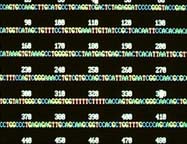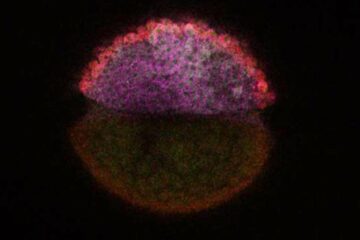Genome exposes buried bugs

Human DNA analysis catches disease-causing culprits. <br>© SPL <br>
Knowing the human genetic sequence helps unearth invaders.
Human DNA is a new device for disease detectives. The database of human genetics can expose misfit microbe genes in diseased tissues, a US team have found.
Matthew Meyerson, of the Dana-Farber Cancer Institute in Boston, and his colleagues compared 7,000 DNA sequences extracted from cervical cancer cells to the vast database of human genes – and pulled out two misfits. Both were from a virus known to cause the cancer1.
“I was delighted,” says Meyerson apropos his find. He hopes to identify infectious bugs or viruses that are implicated in disease using the technique.
“It’s promising,” agrees pathologist Patrick Moore of Columbia University in New York. Infection is thought to trigger the onset of some cancers, as well as autoimmune diseases such as diabetes, but the identity of the bacteria or viruses at work remain unknown. A new method “is critically needed”, claims Meyerson.
Tracking down a microbe’s few incriminating genes amongst the many thousand human ones “is a hell of a hard thing to do”, says Moore. He likens it to searching through two versions of the Oxford English Dictionary for a single missing word.
Researchers pull off the feat by creating libraries of active genes from healthy and diseased human tissues; the latter incorporate those of resident pathogens. Previously, researchers compared the two by hand – a time-consuming process.
The findings may prompt many to turn to computers for their screening studies, predicts Moore. High-throughput techniques can now quickly determine the DNA make-up of genes in a library; comparing them to sequences in the human-genome database takes only an hour on a desktop computer. Meyerson’s group plans to create and sequence libraries from many diseased tissues.
But some microbes may be hard to pin down, warns Moore. Many bacteria and viruses naturally inhabit the body and it may be difficult to sift these from those that cause disease.
References
- Weber, G. et al. Identification of foreign gene sequences by transcript filtering against the human genome. Nature Genetics, DOI 10.1038/hg818, (2002).
Media Contact
All latest news from the category: Health and Medicine
This subject area encompasses research and studies in the field of human medicine.
Among the wide-ranging list of topics covered here are anesthesiology, anatomy, surgery, human genetics, hygiene and environmental medicine, internal medicine, neurology, pharmacology, physiology, urology and dental medicine.
Newest articles

Attosecond core-level spectroscopy reveals real-time molecular dynamics
Chemical reactions are complex mechanisms. Many different dynamical processes are involved, affecting both the electrons and the nucleus of the present atoms. Very often the strongly coupled electron and nuclear…

Columbia researchers “unzip” 2D materials with lasers
The new technique can modify the nanostructure of bulk and 2D crystals without a cleanroom or expensive etching equipment. In a new paper published on May 1 in the journal…

Decoding development: mRNA’s role in embryo formation
A new study at Hebrew University reveals insights into mRNA regulation during embryonic development. The study combines single-cell RNA-Seq and metabolic labeling in zebrafish embryos, distinguishing between newly-transcribed and pre-existing…





















